How to choose necklace lengths for confident layering? Knowing how to wear multiple necklaces can transform your look from simple to stunning. This styling technique adds depth, texture, and personality to any outfit. Whether you’re dressing up for a night out or elevating your everyday style, layering necklaces creates visual interest and draws attention to your neckline. Because it allows for creative expression, this trend has become a favorite among fashion lovers worldwide.
Moreover, wearing more than one necklace is not about piling on jewelry randomly. Instead, it requires thoughtful coordination of lengths, materials, and designs. When done right, layered necklaces enhance your features and complement your clothing. On the other hand, poor layering can appear cluttered or overwhelming. Therefore, understanding the basics is essential. In this article, we’ll explore practical tips, popular combinations, and common mistakes to avoid when learning how to wear multiple necklaces. By the end, you’ll feel confident building balanced, eye-catching stacks that reflect your unique taste.
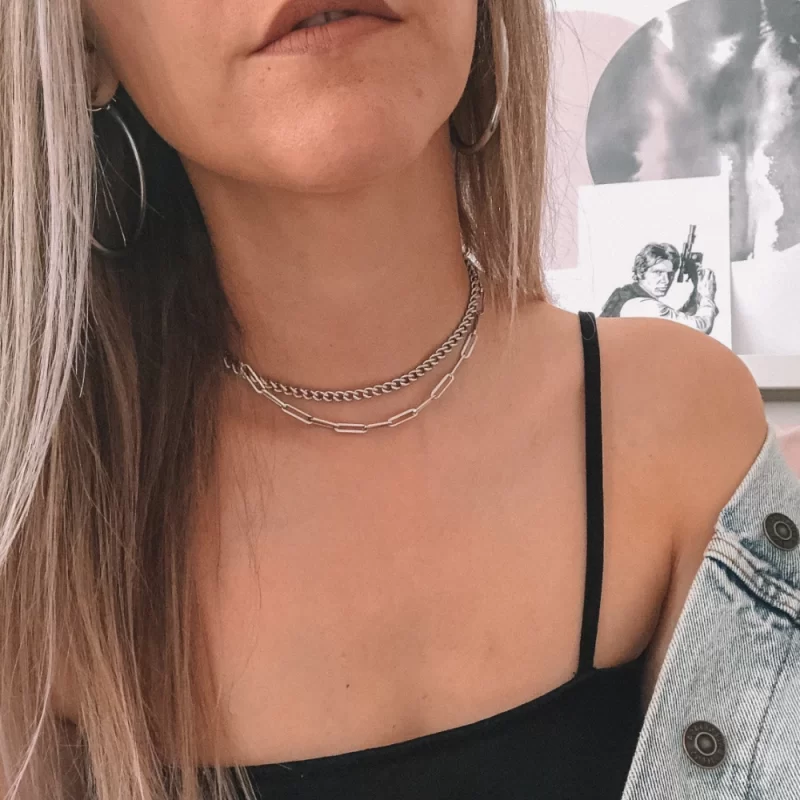 Understanding Necklace Lengths and Their Role in Layering
Understanding Necklace Lengths and Their Role in Layering
Necklace length plays a key role in how to wear multiple necklaces successfully. Each length sits at a different point on the body, creating distinct silhouettes. Therefore, choosing the right mix ensures harmony rather than chaos.
First, choker length (14–16 inches) rests snugly around the base of the neck. It works well as the top layer in a stack. Because it sits high, it frames the face and highlights collarbones.
Second, princess length (17–19 inches) falls just below the throat. This is the most versatile size. It pairs easily with both chokers and longer chains. Many people use it as a middle layer.
Third, matinee length (20–24 inches) reaches the upper chest. It adds balance to shorter pieces above it. This length looks great with V-necks and open collars.
Fourth, opera length (28–34 inches) drapes down to the breastbone or waist. It serves as an anchor in a layered set. You can also double-wrap it for a bolder effect.
Fifth, rope length (over 34 inches) offers dramatic flair. Worn alone or looped, it makes a strong statement. However, use it sparingly in stacks to avoid heaviness.
Additionally, mixing two or three lengths works best. For example, combine a 16-inch choker, an 18-inch pendant chain, and a 24-inch beaded strand. This creates a cascading effect.
Also, consider your neck size and posture. Shorter necks benefit from slightly longer layers to elongate the appearance. Taller individuals can carry off deeper drops with ease.
Because proper length selection prevents tangling and improves proportion, it’s the foundation of successful layering. Hence, always measure and test before finalizing your stack.
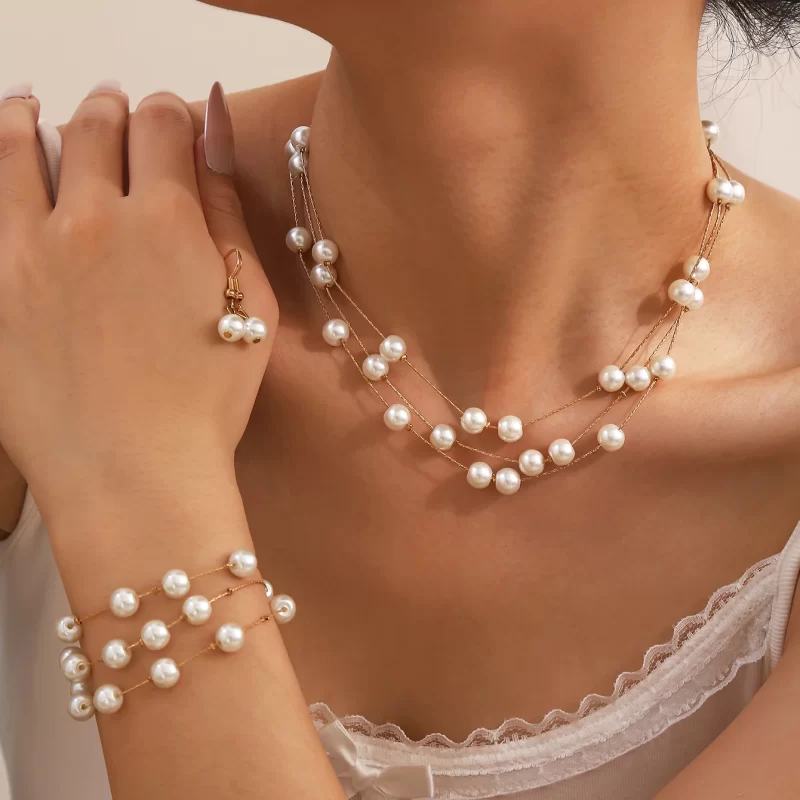 Choosing the Right Materials and Textures for Balance
Choosing the Right Materials and Textures for Balance
When figuring out how to wear multiple necklaces, material choice affects both look and comfort. Mixing metals, finishes, and textures adds dimension without overcrowding.
First, combine different metal tones. Gold, silver, and rose gold can coexist beautifully. For instance, pair a delicate gold chain with a chunky silver pendant. The contrast creates modern elegance.
Second, vary surface finishes. Try pairing a shiny polished chain with a matte or hammered piece. This subtle difference catches light in unique ways.
Third, blend chain styles. Cable, box, rope, and paperclip links each bring a distinct feel. A thin cable chain layered over a thick curb chain produces dynamic contrast.
Fourth, include mixed media elements. Add a leather cord, fabric ribbon, or beaded strand to your metal chains. These organic textures soften the overall look.
Fifth, consider weight distribution. Heavy pendants should sit lower. Lighter chains work better near the top. This keeps the stack balanced and comfortable.
Sixth, match materials to your skin tone. Warm undertones suit gold and copper. Cool tones look best with silver and platinum. Neutral tones can wear both.
Seventh, avoid using too many bold pieces at once. One standout necklace is enough. Let the others play supporting roles.
Because texture and material influence perception, smart mixing enhances sophistication. Therefore, don’t overlook these details when building your collection.
Popular Necklace Stacking Styles and Combinations
There are several go-to formulas for mastering how to wear multiple necklaces. These proven combinations make layering easy and stylish.
First, the minimalist stack uses two or three thin chains. All are similar in length but differ slightly in thickness. This understated look works well for office wear or casual outings.
Second, the pendant layering style includes one main pendant on a medium-length chain. Add a shorter plain chain above it and a longer one below. This draws focus to the centerpiece.
Third, the mixed-metal approach combines gold and silver intentionally. Designers often call this “metal stacking.” It feels edgy yet refined.
Fourth, the bohemian stack features natural elements. Think wooden beads, seashells, and woven cords mixed with fine chains. This free-spirited style suits summer festivals and beach trips.
Fifth, the asymmetrical stack uses uneven lengths on purpose. For example, a 16-inch choker with a 30-inch single-link chain. The imbalance creates artistic tension.
Sixth, the monochromatic stack sticks to one metal tone. But it varies link size and shape. This unified look feels luxurious and intentional.
Seventh, the charm cluster style strings small charms along multiple chains. Initials, stars, or hearts personalize the set. Kids and teens love this playful option.
Because these styles cater to different tastes, you can switch them based on mood or occasion. Furthermore, experimenting helps you discover what flatters your body and style.
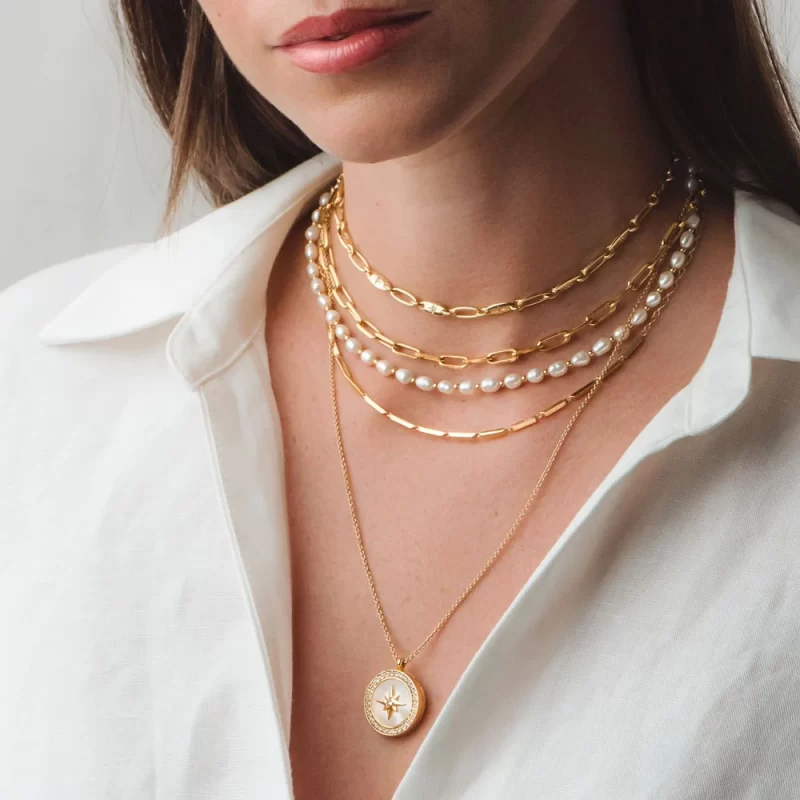 How to Match Layered Necklaces with Necklines and Outfits
How to Match Layered Necklaces with Necklines and Outfits
Your neckline determines how well your layered necklaces will show. Therefore, matching jewelry to clothing is crucial when learning how to wear multiple necklaces.
First, crew necks and turtlenecks leave little exposed skin. Choose short chokers or very delicate chains. Long layers will disappear under the fabric.
Second, V-necks open up space for longer chains. Try a 20- or 24-inch pendant that follows the angle. Add a shorter chain above to fill the top.
Third, strapless or off-the-shoulder tops expose collarbones. This is ideal for multi-layered looks. Use 16-, 18-, and 22-inch chains to maximize visibility.
Fourth, button-down shirts allow flexibility. Unbutton one or two buttons to create room for mid-length layers. Keep chains slim to avoid catching on fabric.
Fifth, deep plunging necklines work best with long opera or rope-length necklaces. Avoid short chains that end awkwardly in the gap.
Sixth, high-fashion cutouts offer unique opportunities. Place chains to follow the design lines. For example, a diagonal cutout pairs well with a slanted pendant.
Seventh, winter layers like turtlenecks or scarves limit visible jewelry. Opt for longer chains that drape over clothing. Or remove layers when indoors.
Because coordination enhances both comfort and aesthetics, always check your reflection before heading out. Thus, pairing necklaces with outfits becomes second nature.
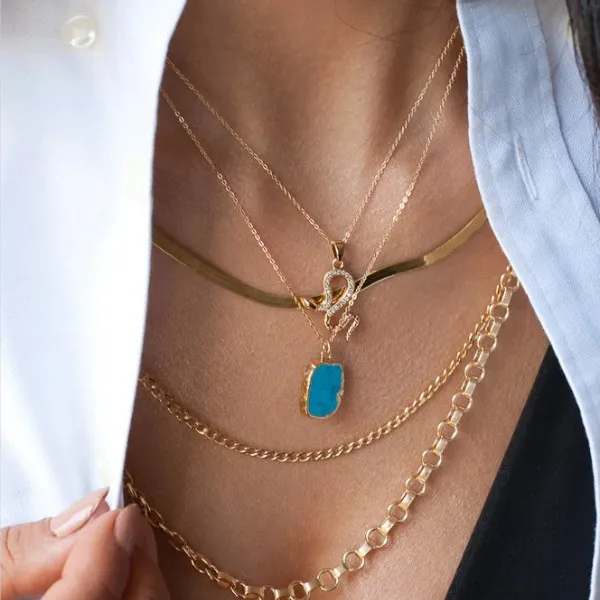 Frequently Asked Questions About How to Wear Multiple Necklaces
Frequently Asked Questions About How to Wear Multiple Necklaces
Can I mix different pendant sizes?
Yes, but place larger pendants on longer chains. Smaller ones should sit higher to maintain balance.
Should all my necklaces be the same metal?
No, mixing metals is stylish. Just ensure they share a finish tone—matte with matte, shiny with shiny.
How many necklaces is too many?
Three to four is usually enough. More than that can look messy unless carefully styled.
Do layered necklaces tangle easily?
They can, especially if worn during active movement. Use anti-tangle sprays or store them separately.
Can men wear multiple necklaces?
Absolutely. Many men layer simple chains in silver or black. It adds edge to casual or streetwear looks.
Is it okay to wear family heirloom necklaces in a stack?
Yes, heirlooms can be part of a modern mix. Pair them with simpler chains to honor their significance.
What’s the best way to clean layered necklaces?
Clean them individually. Lay them flat and wipe with a soft cloth. Avoid soaking if they have leather or fabric parts.
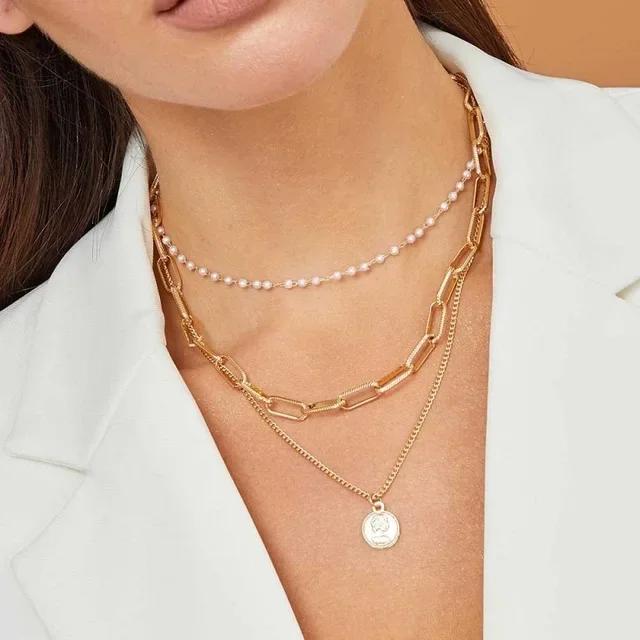 Final Thoughts: Building Confidence in How to Wear Multiple Necklaces
Final Thoughts: Building Confidence in How to Wear Multiple Necklaces
How to layer necklaces for a stylish look without clashing? Learning how to wear multiple necklaces opens up endless possibilities for self-expression. It turns basic outfits into curated looks full of personality and flair. With the right mix of lengths, materials, and styles, anyone can master this trend.
Furthermore, layering allows you to showcase meaningful pieces—birthstone pendants, religious symbols, or travel souvenirs—all at once. Each necklace tells a story, and together, they create a narrative.
As fashion continues to embrace individuality, the ability to style jewelry creatively becomes more valuable. Whether you prefer minimal stacks or bold combinations, the key is intention. Choose pieces that resonate with you and fit your lifestyle.
Ultimately, how to wear multiple necklaces isn’t about following strict rules. It’s about experimentation, confidence, and joy. So start small, build gradually, and let your neckline speak volumes.